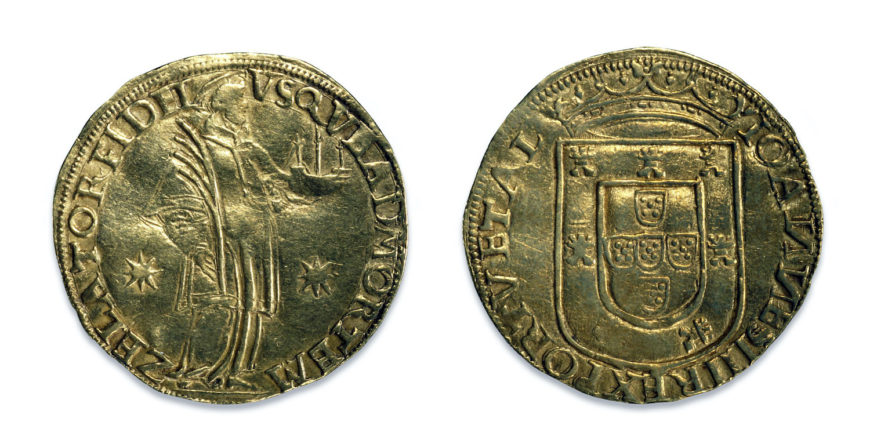
Gold S. Vincente of João III, king of Portugal, 1521–1557, minted in Portugal, 7.6 grams (© Trustees of the British Museum)
The pioneering explorations which launched the European Age of Discovery in the fifteenth century gave Portugal direct access to the gold supplies of west Africa. With other Europeans in their wake, the Portuguese continued round Africa to the Indian Ocean and beyond. There they traded with eastern civilizations, and encountered new monetary systems. From the mid-fifteenth century, Portugal’s access to the African Gold Coast greatly affected its coinage. This was changed from base-silver reals to a range of coins including plentiful gold pieces: the cruzado (equal to the ducat), and larger multiples. They carried a new title for the king: ‘King of Guinea’, a title assumed in 1485 by King João II.
St Vincent, who is portrayed on this coin, was the patron saint of Portugal and of navigation. He is shown holding up a caravel, the ocean-going ship of Portuguese exploration. The coin, named after the saint, was introduced in 1555 to be worth 1000 reis.
© Trustees of the British Museum

